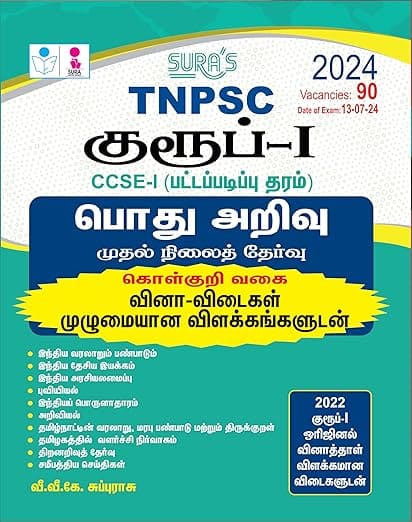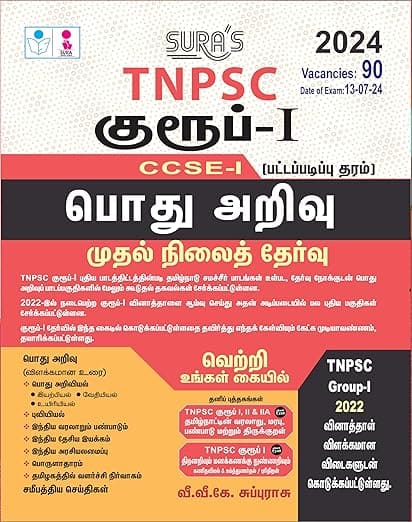Science : Chapter 20 : Reaching the age of Adolescence
TEXTBOOK EXERCISES
I. Choose the best answer.
1. Adolescence is the period of life between _____________ years of age.
a) 10 to 16
b) 11 to 17
c) 11 to 19
d) 11 to 20
[ Answer: (c) 11 to 19]
2. The period at which an organism attains sexual maturity is called _____________
a) puberty
b) adolescence
c) growth
d) maturity
[Answer: (a) puberty]
3. During puberty, the region below the waist become wider in _____________
a) boys
b) girls
c) Both a and b
d) None of these
[Answer: (c) Both a and b]
4. Adam’s apple is the growth of the ________
a) pharynx
b) thyroid
c) larynx
d) parathyroid
[Answer: (c) larynx]
5. Many adolescent boys and girls get pimples on face, due to the secretions of _________gland.
a) sweat
b) sebaceous
c) sweat and sebaceous
d) None of these
[Answer: (b) sebaceous]
6. The sperm is produced by ____________
a) penis
b) ovary
c) uterus
d) testes
[Answer: (d) testes]
7. ___________ are the chemical substances, secreted by endocrine glands.
a) Hormones
b) Enzymes
c) Proteins
d) Fatty acids
[Answer: (a) Hormones]
8. Androgen production is regulated by___________
a) GH hormone
b) LH hormone
c) TSH hormone
d) ACTH hormone
[Answer: (b) LH hormone]
9. During menstruation, the progesterone level is ___________
a) decreased
b) increased
c) ceased
d) normal
[Answer: (a) ceased]
10.___________ intake needs to be increased to prevent osteoporosis in later life.
a) Potassium
b) Phosphorus
c) Iron
d) Calcium
[Answer: (d) Calcium]
II. Fill in the blanks.
1. Estrogen is secreted by the ovaries of female.
2. The hormones secreted by the gonads are controlled by Anterior pituitary.
3. Milk secretion during lactation is controlled by prolactin hormone.
4. The male and the female gamete fuse together and form zygote.
5. The first menstrual flow begins at puberty and it is termed as menarche.
6. Menstruation usually occurs 14 days after ovulation.
7. Balanced diet includes protein, carbohydrates, fats and vitamins in requisite proportion.
8. Iodine helps to prevent thyroid gland related diseases.
9. Iron deficiency leads to Anaemia.
10. In women fertilization takes place at Fallopian tube.
III. State true or false. If false, correct the statement.
1. There is a sudden increase in the height of both boys and girls during pubery. [Answer: True]
2. The release of ovum from the uterus is called ovulation. [Answer: False]
Correct statement: The release of ovum from the ovary is called ovulation.
3. During pregnancy, the corpus luteum continues to grow and produces large amount of estrogen and progesterone. [Answer: True]
4. Making use of disposable napkins or tampons may increase the chances of infections. [Answer: False]
Correct statement: Making use of disposable napkins or tampons may reduce the chances of infections
5. Using clean toilets for defecation is a good practice. [Answer: True]
IV. Match the following.
1. Puberty – Testosterone
2. Adam’s apple – Muscle development
3. Androgen – at 45 to 50 years of age
4. ICSH – Sexual maturity
5. Menopause – Change in voice
Answer:
1. Puberty – Sexual maturity
2. Androgen – Muscle development
3. ICSH – Testosterone
4. Menopause – at 45 to 50 years of age
V. Answer briefly.
1. What is adolescence?
Answer:
(i) The term adolescence is derived from the Latin word ‘adolescere’ meaning ‘to grow’ or ‘grow to maturity’.
(ii) Biologically it is a physical transition marked by the onset of puberty and termination of physical growth in an individual.
2. List out the changes which occur during puberty.
Answer: Puberty transform the body of a child into that of an adult. These changes are:
(i) Changes in body size
(ii) Changes in body proportion
(iii) Development of primary sex characteristics
(iv) Development of secondary sex characteristics.
3. What do you mean by secondary sex characteristics?
Answer: Secondary sex characteristics are the physical features which distinguish male from female.
4. What is fertilization?
Answer: The fusion of the sperm and egg is called fertilization.
5. Explain Menarche.
Answer:
(i) The first menstrual flow begins at puberty and is termed menarche.
(ii) It is the beginning of adolescence, during which mental and emotional maturation occurs and physical growth becomes pronounced.
6. Explain the process of pregnancy.
Answer:
(i) After ovulation, the ovum reaches the fallopian tube and fertilization takes place.
(ii) The fertilized egg undergoes development and it is implanted in the uterus.
(iii) The corpus luteum continues to grow and produces large amount of progesterone.
(iv) This results in pregnancy. Normally, it lasts for 280 days, at the end of which parturition (child birth) takes place.
7. Explain the importance of cleanliness during the time of menstrual cycle in girls.
Answer:
(i) Girls should take special care of cleanliness during the time of menstrual cycle
(ii) Making use of disposable napkins or tampons may reduce chances of infections. It should be changed frequently depending upon the menstrual flow.
8. How is adolescence differ from childhood?
Answer:
(i) The period of life from birth till 12 years is also childhood. Adolescence begins from age of 12 – 13 years.
(ii) Lot of changes in height, weight, sex organs, muscle mass etc, occur in adolescence.
VI. Answer in detail.
1. What are the physical changes that occur in boys and girls during adolescence?
Answer: Secondary sex characteristics are the physical features which distinguish male from female.
The physical changes that occur is boys and girls during adolescence are :
Girls
• Height and weight increase.
• Fatty and subcutaneous tissues develop.
• Hip broadens.
• Hair grows in arm pits and pubic area
• Voice becomes shrill.
• Breast develops.
Boys
• Height and weight increase.
• Muscles develop.
• Shoulder broadens.
• Hair grows in the arm pits and pubic area, and facial hair also appears.
• Voice break takes place due to lengthening of vocal cord and enlarging of larynx.
• Size of the penis increases.
2. Explain the role of hormones in reproduction.
Answer:
(i) The primary hormones that regulate reproduction are the steroids such as androgens, estrogens and progesterone which have masculinizing, feminizing and gestational effects respectively.
(ii) These hormones are secreted from the gonads which are regulated by the anterior pituitary (adenohypophysis).
Follicle Stimulating Hormone (FSH)
(i) FSH in a female influences the development of the Graafian follicle and secretion of estrogens.
(ii) In a male, it is necessary for the development of seminiferous tubules, and for spermatogenesis.
Luteinizing Hormone (LH)
In a female, it is the hormone necessary for ovulation, and the secretion of the luteal hormone progesterone, and for the final maturation of the Graafian follicle. In a male, it stimulates the interstitial (Leydig) cells of testes and the secretion of testosterone, and is referred to as the Interstitial Cell Stimulating Hormone (ICSH).
Prolactin (PRL) or Lactogenic Hormone
The main function of this hormone is milk secretion during lactation.
Oxytocin Hormone
Oxytocin causes expulsion of milk from the breast and it is also involved in the contraction of smooth muscles of uterus during child birth.
3. Briefly describe the menstrual cycle.
Answer: The beginning of the menstrual cycle marks the onset of puberty in human females. Menstruation occurs if an ovum released by the ovary of a woman is not fertilized during ovulation. This is described below.
(i) When a girl reaches puberty at the age of about 10, the sex hormones released into her blood cause some of the ova (or egg cells) in her ovaries to become mature (or ripe).
(ii) Usually one mature ovum (or egg) is released from one of the ovaries into the oviduct once in every 28 days. This is called ovulation.
(iii) Before ovulation (or release of ovum), the inner wall of uterus becomes thick and spongy, and full of tiny blood vessels to receive the fertilized ovum.
(iv) If the ovum does not get fertilized then the thick and soft inner lining of uterus breaks.
So, the thick and soft inner lining of uterus along with the blood vessels and the dead ovum comes out of the vagina in the form of a bleeding called menstruation.
(v) Menstruation usually occurs 14 days after ovulation and usually lasts for about 3 to 5 days.
(vi) After menstruation is over, the inner lining of the uterus starts building up again so that it may become ready to receive the next ovum.
(vii) If the ovum does not get fertilized even now, then menstruation takes place again. This cycle of menstruation is repeated again and again in Women after every 28 days.
The menstrual cycle is controlled by hormones.
Menstruation stops temporarily when the ovum gets fertilized.and the women gets pregnant. Menstruation also stops due to nutritional deficiencies, low body weight, stress, eating disorder, excessive weight gain etc.
4. Explain the nutritional needs of adolescence in brief.
Answer:
(i) Adolescence is a stage of rapid growth and development.
(ii) Balanced diet is very much important during adolescence. Balanced diet includes proteins, carbohydrates, fats and vitamins in requisite proportions.
(iii) A very good amount of proteins and carbohydrates is necessary during this growth period. Apart from that, adolescents need the following dietary components.
Minerals
Since there is an increase in skeletal mass and blood volume during adolescence, the body needs calcium, phosphorus and iron.
Calcium;
(i) Calcium intake needs to be increased to prevent osteoporosis in later life.
(ii) It is present in milk and milk products or other equivalents.
Iodine
It helps to prevent thyroid gland related diseases.
Iron
(i) Iron builds blood and iron-rich foods such as green leafy vegetables, jaggery, meat, dates, fish, chicken, citrus, Indian gooseberry (Nelli) and whole pulses are good for adolescents.
(ii) Lack of iron in the diet results in anemia.
(iii) In boys, iron deficiency occurs due to muscle spurt whereas in girls it occurs due to menstruation in addition to the muscular growth.
VII. Higher Order Thinking Questions.
1. What can you suggest to your classmates to keep himself / herself clean and healthy?
Answer:
(i) Shower or bath daily.
(ii) Always wash your hands before and after meals.
(iii) Keep fingernails clean and dipped.
(iv) Wash your teeth and mouth before and after each meal.
(v) Avoid touching your face, nose or mouth while preparing food.
(vi) Avoid coughing or sneezing around food and close your mouth by using hand kerchief while you cough in public places.
(vii) If you want to taste the food, use a clean spoon.
(viii) Change your clothes regularly and wash them cleanly, especially undergarments.
(ix) Do not defecate in open field. Use clean toilets for defecation.
(x) If you are not well, avoid self-medication, consult a doctor.
(xi) In case of girls, menstrual hygiene can be explained to them.
2. Adolescence is the energistic stage. What health and good habits you want to develop?
Answer: Healthy and good habits that we should develop during adolescence are:
(i) Eat balanced diet and avoid junk food to prevent obesity.
(ii) Regular physical exercise which helps to build our body.
(iii) Keep ourselves clean by bathing twice a day, cutting hair, trimming nails, wearing clean cloths.
(iv) Keep away from abusive substances, drugs smoking and any other bad habits.
(v) Observe menstrual hygiene.
(vi) Be aware of problems related to adolescence and take care of one’s physical and mental health.
Student Activities
Activity 1
Divide the students in your class into different groups (Form separate groups for boys and girls). Measure the height and weight of all the students in each group and find out the average. Record your observations in your notebook.
Activity 2
Answer the following questions.
* Has your voice changed?
* Are there pimples or acne on your face?
* Do you feel that some changes have taken place in your body?
These changes are normal in your development. Discuss with your teacher or counsellor in your school and clarify your doubts.
Activity 3
Collect data on the number of students in your class who exercise regularly and who do not exercise regularly. Do you notice any difference in their fitness and health? Prepare a report on the benefits of regular exercise.
Activity 4
Collect more information on balanced diet and prepare a chart. Display the chart in your class and discuss its importance.
Activity 5
Answer the following questions.
* Do you exercise regularly?
* Do you keep yourself clean?
* When do you go to bed?
* When do you get up?
Compare your response with that of your friends. Do you think you need to change yourself? Discuss with your teacher.
Testes and ovaries are called primary sex organs of the male and female respectively.
At puberty, the growth of the larynx is larger in boys than that of girls. The growing voice box in boys can be seen as a protruding part of the throat called Adam’s apple, so that the voice becomes deep and harsh. This is caused mainly by male hormone (regulatory chemicals) during adolescence. As a result of this, muscles (chords) attached to the cartilage get loosened and thickened. When air passes through these loosened and thickened chords a hoarse sound is produced. In girls larynx is hardly visible from outside because of its small size and the voice becomes high pitched.
The secretions of sweat and sebaceous or subcutaneous glands (Oil glands) are very active during adolescence. Many adolescent boys and girls get pimples on face because of increased activity of these glands in the skin. Owing to extra secretions sometimesa distinctive odour is also produced from the bodies.
Estrogen is not a single hormone but a collection of related steroid hormones.
Now-a-days girls attain puberty at very early age. This is due to food habits. As you eat lot of junk food, the body growth increases and it looks like adults.
Sleep is vital to the well-being of adolescents. It can even help you to come out of the stress you experience during this period. During this period about 8 to 10 hours of sleep each night is necessary. But most teens do not have enough sleep which affects their physical and mental health.
Women should take in more iron in their diet regularly to make up for the loss of blood during menstruation.














